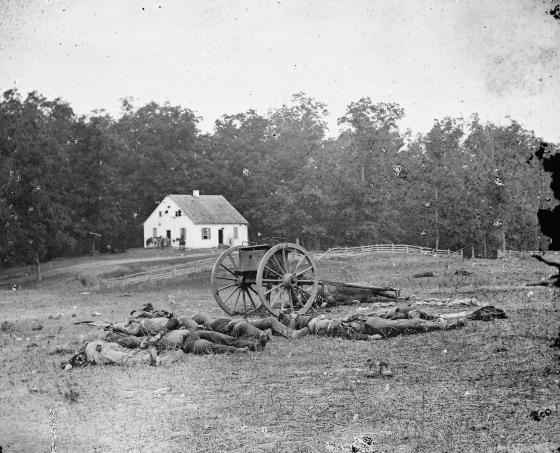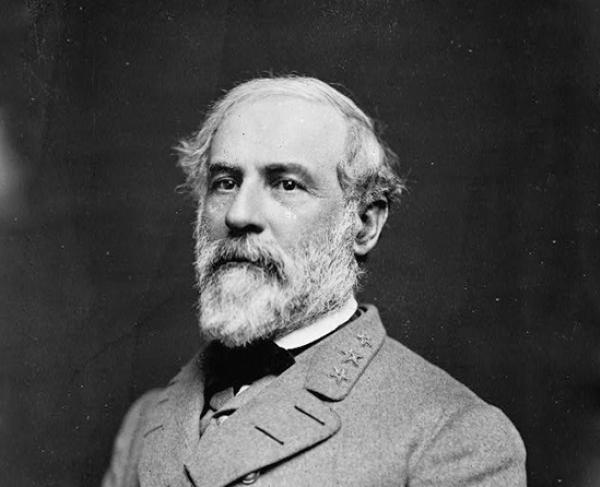A Brief Overview of the American Civil War

The Civil War is the central event in America’s historical consciousness. While the Revolution of 1776-1783 created the United States, the Civil War of 1861-1865 determined what kind of nation it would be. The war resolved two fundamental questions left unresolved by the revolution: whether the United States was to be a dissolvable confederation of sovereign states or an indivisible nation with a sovereign national government; and whether this nation, born of a declaration that all men were created with an equal right to liberty, would continue to exist as the largest slave holding country in the world.
Northern victory in the war preserved the United States as one nation and ended the institution of slavery that had divided the country from its beginning. But these achievements came at the cost of 625,000 lives–nearly as many American soldiers as died in all the other wars in which this country has fought combined. The American Civil War was the largest and most destructive conflict in the Western world between the end of the Napoleonic Wars in 1815 and the onset of World War I in 1914.
The Civil War started because of uncompromising differences between the free and slave states over the power of the national government to prohibit slavery in the territories that had not yet become states. When Abraham Lincoln won election in 1860 as the first Republican president on a platform pledging to keep slavery out of the territories, seven slave states in the deep South seceded and formed a new nation, the Confederate States of America. The incoming Lincoln administration and most of the Northern people refused to recognize the legitimacy of secession. They feared that it would discredit democracy and create a fatal precedent that would eventually fragment the no-longer United States into several small, squabbling countries.
The event that triggered war came at Fort Sumter in Charleston Bay on April 12, 1861. Claiming this United States fort as their own, the Confederate army on that day opened fire on the federal garrison and forced it to lower the American flag in surrender. Lincoln called out the militia to suppress this “insurrection.” Four more slave states seceded and joined the Confederacy. By the end of 1861 nearly a million armed men confronted each other along a line stretching 1200 miles from Virginia to Missouri. Several battles had already taken place–near Manassas Junction in Virginia, in the mountains of western Virginia where Union victories paved the way for creation of the new state of West Virginia, at Wilson’s Creek in Missouri, at Cape Hatteras in North Carolina, and at Port Royal in South Carolina where the Union navy established a base for a blockade to shut off the Confederacy’s access to the outside world.
But the real fighting began in 1862. Huge battles like Shiloh in Tennessee, Gaines’ Mill, Second Manassas, and Fredericksburg in Virginia, and Antietam in Maryland foreshadowed even bigger campaigns and battles in subsequent years, from Gettysburg in Pennsylvania to Vicksburg on the Mississippi to Chickamauga and Atlanta in Georgia. By 1864 the original Northern goal of a limited war to restore the Union had given way to a new strategy of “total war” to destroy the Old South and its basic institution of slavery and to give the restored Union a “new birth of freedom,” as President Lincoln put it in his address at Gettysburg to dedicate a cemetery for Union soldiers killed in the battle there.

 For three long years, from 1862 to 1865, Robert E. Lee‘s Army of Northern Virginia staved off invasions and attacks by the Union Army of the Potomac commanded by a series of ineffective generals until Ulysses S. Grant came to Virginia from the Western theater to become general in chief of all Union armies in 1864. After bloody battles at places with names like The Wilderness, Spotsylvania, Cold Harbor, and Petersburg, Grant finally brought Lee to bay at Appomattox in April 1865. In the meantime Union armies and river fleets in the theater of war comprising the slave states west of the Appalachian Mountain chain won a long series of victories over Confederate armies commanded by hapless or unlucky Confederate generals. In 1864-1865 General William Tecumseh Sherman led his army deep into the Confederate heartland of Georgia and South Carolina, destroying their economic infrastructure while General George Thomas virtually destroyed the Confederacy’s Army of Tennessee at the battle of Nashville.
For three long years, from 1862 to 1865, Robert E. Lee‘s Army of Northern Virginia staved off invasions and attacks by the Union Army of the Potomac commanded by a series of ineffective generals until Ulysses S. Grant came to Virginia from the Western theater to become general in chief of all Union armies in 1864. After bloody battles at places with names like The Wilderness, Spotsylvania, Cold Harbor, and Petersburg, Grant finally brought Lee to bay at Appomattox in April 1865. In the meantime Union armies and river fleets in the theater of war comprising the slave states west of the Appalachian Mountain chain won a long series of victories over Confederate armies commanded by hapless or unlucky Confederate generals. In 1864-1865 General William Tecumseh Sherman led his army deep into the Confederate heartland of Georgia and South Carolina, destroying their economic infrastructure while General George Thomas virtually destroyed the Confederacy’s Army of Tennessee at the battle of Nashville.
By the spring of 1865 all the principal Confederate armies surrendered, and when Union cavalry captured the fleeing Confederate President Jefferson Davis in Georgia on May 10, 1865, resistance collapsed and the war ended. The long, painful process of rebuilding a united nation free of slavery began.
Summary Of Events and Dates Of The American Civil War
The Civil War was fought from April 1861 to April 1865.
Civil War 1861
January: The South Secedes. Immediately after Abraham Lincoln is elected President, South Carolina calls a state convention to remove itself from the United States of America. South Carolina is quickly followed by Florida, Mississippi, Georgia, Alabama, Louisiana, and Texas. Later, Virginia, Arkansas, Tennessee, and North Carolina also secedes, forming the Confederate States of America.
April 12, Battle of Fort Sumter Charleston Harbor, South Carolina
June 3, Battle of Philippi, (West) Virginia
June 10, Battle of Big Bethel, Virginia
July 11, Battle of Rich Mountain, (West) Virginia
July 21, First Battle of Bull Run Manassas, Virginia
November 7–8, Battle of Port Royal Sound, South Carolina
November 7, Battle of Belmont, Missouri
Civil War 1862
February 8, Roanoke Island, North Carolina
March 8–9, Battle Of Hampton Roads, Virginia
April 5–May 4 Siege of Yorktown, Virginia
June 26, Beaver Dam Creek, Virginia*
June 27, Gaines Mill, Virginia*
June 27–28, Garnett’s Farm and Golding’s Farm, Virginia*
June 29, Savage Station and Allen’s Farm, Virginia*
June 30, White Oak Swamp, Virginia*
June 30, Glendale, Virginia*
July 1, Malvern Hill, Virginia*
(*Collectively known as the Seven Days Campaign or Seven Days Battles.)
August 9, Battle of Cedar Mountain, Virginia
August 28–30, Second Battle of Bull Run Manassas, Virginia
September 12–15, Harpers Ferry, (West) Virginia
September 14, Battle of South Mountain, Maryland
September 17, Battle of Antietam / Sharpsburg
September 19–20, Shepherdstown, (West) Virginia
December 11–15, Battle of Fredericksburg, Virginia
February 6, Fort Henry, Tennessee
February 11–16, Siege of Fort Donelson, Tennessee
March 3–April 8, Siege of New Madrid and Island No. 10, Missouri (Mississippi River)
April 6–7, Battle of Shiloh, Tennessee
May 25–30, Siege of Corinth, Corinth, Mississippi
June 28, Battle of Vicksburg, Mississippi
August 29, Battle of Richmond, Kentucky
October 3–4, Battle of Corinth, Mississippi
October 5, Hatchie’s Bridge, Tennessee
October 8, Battle of Perryville, Kentucky.
December 31–January 2, Battle of Stones River / Murfreesboro, Tennessee
March 8, Battle of Pea Ridge, Arkansas
October 4, Battle of Galveston, Texas
Civil War 1863
April 30–May 6, Battle of Chancellorsville, Virginia
May 3, Fredericksburg, Virginia
July 1–3, Battle of Gettyburg, Pennsylvania
April 10, Battle of Franklin, Tennessee.
May 18–July 4, Siege of Vicksburg, Mississippi
September 18, Battle Of Chickamauga, Georgia
November 23-25, Battle Of Chattanooga, Tennessee November 24, Lookout Mountain (Chattanooga), TennesseeCivil War 1864
Civil War 1864
May 5–7, Battle Of The Wilderness, Virginia
May 6–7, Port Walthall Junction, Virginia
May 8–21, Battle of Spotsylvania Courthouse, Virginia
May 15, Battle of New Market, Shenandoah County, Virginia
May 31-June 12, Battle of Cold Harbor, Virginia
June 15–18, Battle of Petersburg, Virginia
July 30, Battle of the Crater, Siege of Petersburg, Virginia
September 21–24, Battle of Fisher’s Hill, Virginia
April 12, Battle of Fort Pillow, Tennessee
May 7–13. Rocky Face, Georgia
May 13–15, Battle of Resaca, Georgia
July 22, Battle of Atlanta, Georgia
December 15–16, Battle of Nashville Nashville, Tennessee
December 24–27, Fort Fisher, North Carolina
August 5, Battle of Mobile Bay
Civil War 1865
April 5, Amelia Springs, Virginia*
April 6, Rice’s Station, Virginia*
April 6, Saylor’s Creek, Virginia*
April 6–7, High Bridge, Virginia*
April 7, Cumberland Church, Virginia*
April 8, Appomattox Courthouse at Appomattox Station, Virginia*
April 9, General Robert E. Lee surrenders to General Ulysses S. Grant at the Appomattox Court House in Virginia (*Collectively known as the Appomattox Campaign.)



